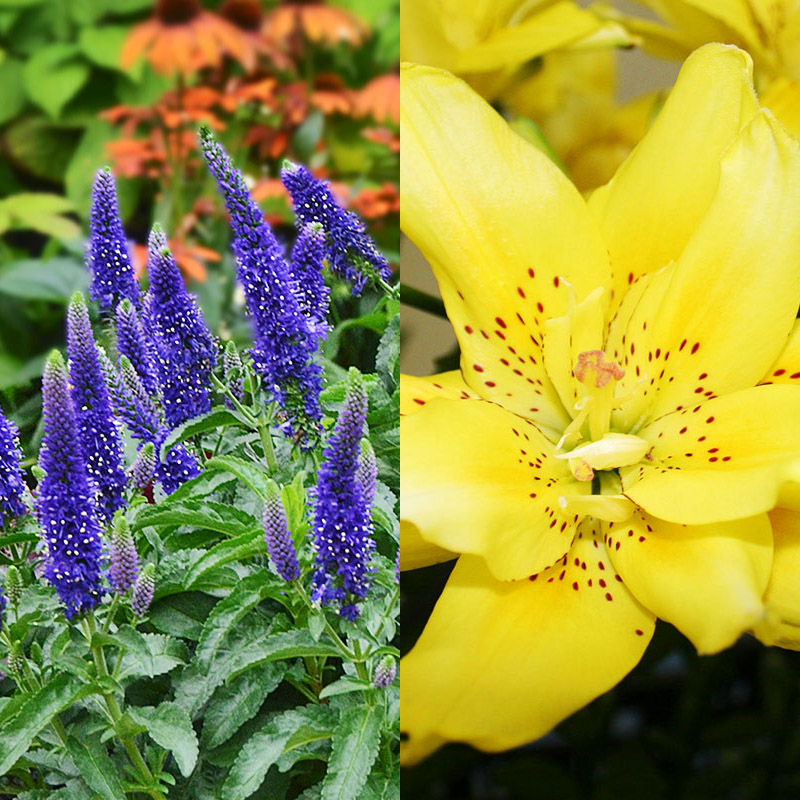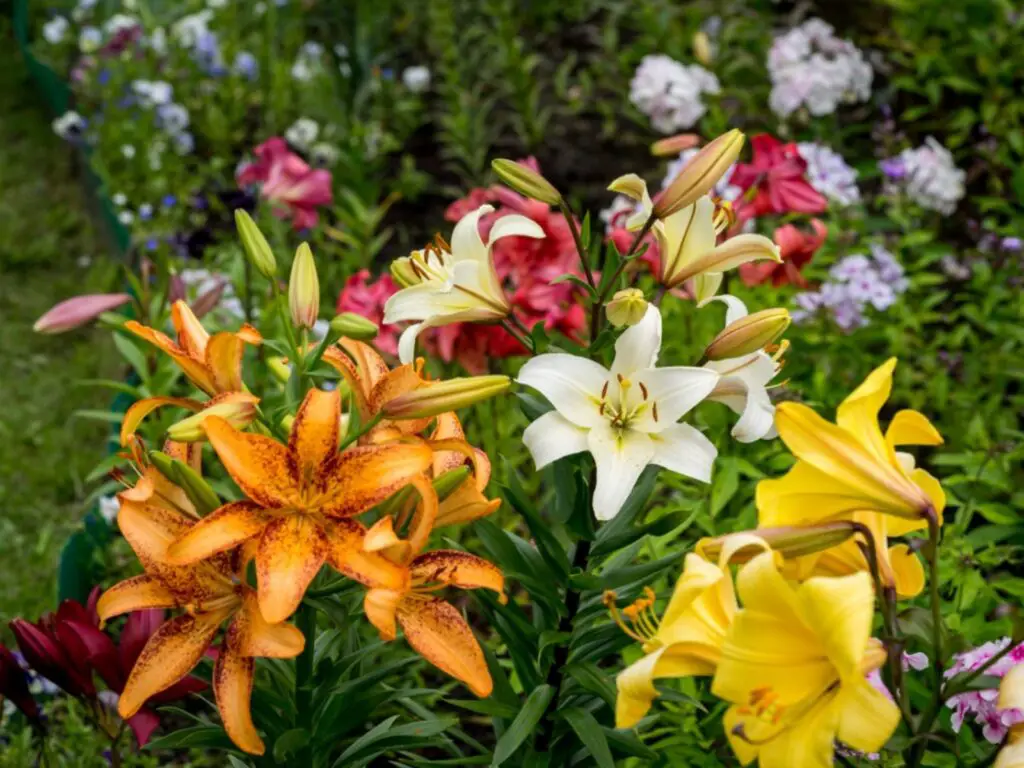Companion planting lilies is an effective way to attract beneficial insects and repel harmful ones. Planting companion plants like marigolds, lavender, yarrow, and chives near lilies can help deter aphids, spider mites, slugs and other pests that might otherwise do damage to the flowers. Additionally, these companion plants will provide food for pollinators such as bees which will in turn help with flower production.
Furthermore some of these companions may even deter deer from grazing on your lilies! While there are many plants that work well with lilies when it comes to companion planting choose varieties based on the environmental needs of your garden for best results.
Companion planting lilies with other plants is a great way to provide essential nutrients that are lacking in the soil. Lilies prefer sunny locations, so it’s important to choose companion plants that can thrive in the same conditions. Planting perennials such as daylilies, hostas and sedums around your lilies will add colour and texture to your garden while providing shelter from wind and creating a habitat for beneficial insects.
Additionally, companion planting also helps retain moisture in the soil which is especially beneficial during hot summer months when rainfall may be limited.

Credit: www.bulbblog.com
Do Lilies Like to Be Crowded?
No, lilies do not like to be crowded. They prefer to have some space between them and other plants, as overcrowding can inhibit their growth. When planting lilies in a garden bed or pot, it’s important to give each plant at least 6-12 inches of breathing room so they don’t compete with each other for resources such as light, water and nutrients.
Additionally, crowding can lead to an increased risk of fungal diseases which could cause the death of your lily plants. Therefore it is best practice to allow enough space when planting these beautiful flowers!
What are Good Companion Plants for Asiatic Lilies?
Asiatic lilies are a beautiful addition to any garden, and when planted with companion plants they can create an even more spectacular display of color. Some great companion plants for Asiatic lilies include daylilies, hostas, ornamental grasses, phlox and sedum. Daylilies will bloom at the same the time as Asiatic lilies and their foliage helps to hide fading foliage from other plants in your garden.
Hostas provide extra greenery which makes a vibrant contrast against the bright colors of the Asiatics. Ornamental grasses add texture while phlox and sedums provide pops of complementary colors like purples or pinks that bring out even more beauty in your display of flowers. By choosing good companions for your Asiatic lilies you will be sure to have a breathtakingly beautiful flower bed!
How Many Lilies Should I Plant Together?
When planting lilies together, it really depends on the size and type of lily you are using. For smaller varieties such as Asiatic or Oriental hybrids, a group of five to six plants per square foot is ideal. If you are growing larger trumpeted varieties like Easter Lilies or Stargazer Lilies, two to three plants per square foot would be best.
When planting in beds, use an odd number for visual balance and also consider spacing them at least 8-12 inches apart to allow room for growth.
Should You Plant Lilies Close Together?
When it comes to planting lilies, you should generally give them some space between each other. Planting them too close together will cause the plants to compete for nutrients and water, leading to stunted growth and even death of one or both plants. Additionally, overcrowded lilies can be more susceptible to diseases like botrytis blight or root rot due to poor air circulation.
For best results, leave at least 18-24 inches between each plant when you’re planting your lily bulbs in order to give them enough room for their roots and foliage as they grow.
Companion planting with lilies
What Not to Plant With Lilies
When planning to plant lilies in your garden, it is important to remember that certain plants can harm the health of these beautiful flowers. Plants like garlic and onions are known to cause root rot when planted near lilies, so it is best to keep them separate. Additionally, some other types of flowers such as dahlias and hollyhocks may also inhibit their growth if placed too close together.
When planting lilies in your garden, be sure to do your research and choose companion plants wisely!
What to Plant With Lilies in Pots
If you’re planting lilies in pots, consider pairing them with other plants that have similar soil and light needs. Some good companion plants for potted lilies include dianthus, begonias, or impatiens. All of these are low-growing blooming plants that require partial sun and well-draining potting soil to thrive.
Planting a combination of colors and textures in the same container will create an eye catching display!
Companion Plants for Canna Lilies
Canna lilies are a beautiful addition to any garden, and can be made even more vibrant when paired with companion plants. Some great companion plants for cannas include impatiens, begonias, coleus, daylilies and nicotiana. These flowering companions not only bring color and texture to the landscape but also provide beneficial attractants like nectar which can help draw in pollinators like bees and butterflies.
Surprise Lily Companion Plants
Surprise lilies are beautiful, low-maintenance plants that can be used to add color and texture to any garden. While they may not need much input from you, there are a few companion plants that work well with surprise lilies. These include Hostas, Coral Bells, Sedum, Daylillies and Foam Flowers.
Each of these companion plants will bring additional colors and textures to your landscape while also helping the surprise lily thrive in its environment by providing shade or taking up extra nutrients in the soil.
What Perennials to Plant With Lilies
When planting lilies, it’s a good idea to select perennials that bloom at the same time as your lilies. Liatris and daylillies are excellent companion plants for lilies, as they both produce tall spikes of colorful flowers. Adding some ornamental grasses or ferns around the base of your lily bed will provide texture to the landscape and give you a diverse array of foliage year-round.
Conclusion
Overall, companion planting lilies is a great way to create and maintain beautiful garden beds. Not only will you have the opportunity to enjoy stunning lily blooms in your garden, but you’ll also be able to provide other plants with important nutrients. Additionally, by choosing pest-resistant varieties of companion plants that can tolerate full sun or partial shade conditions, you can significantly reduce risk of pest infestations while still creating a visually appealing landscape.
Companion planting is an effective technique for ensuring healthy growth of all species involved in the process.


